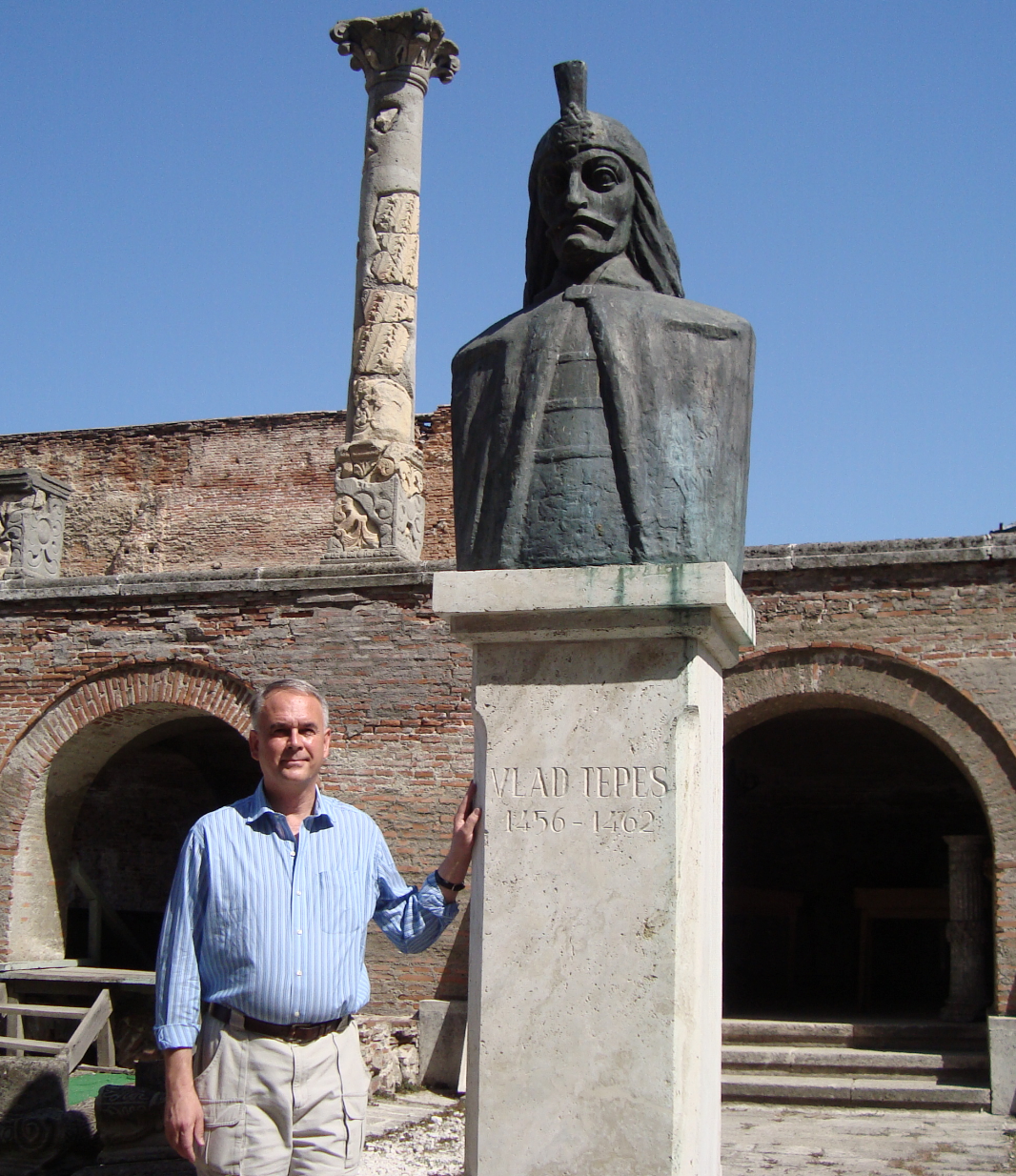Take away Dracula’s black satin cape, razor-sharp fangs and insatiable thirst for blood and what do you have?
A fiercely fascinating human being.
That’s the message of Stephen Reinert’s “Dracula: Facts & Fictions.” The Rutgers Winter Session course, taught from December 23 through January 17, dusts the cobwebs off the villain we think we know to reveal the real-life royal behind the myth – Vlad III, a ruthless 15th-century ruler who nonetheless fought to keep his nation independent.
“He still has a somewhat heroic image today in Romania,” says Reinert, an associate professor in the history department in the School of Arts and Sciences. “He’s seen as someone who defended it against the Ottoman Empire, preserving its autonomy. Certainly his image is on everything in the tourist shops – although there are a number of Romanians who are getting a little tired of their country’s association with Vlad.”
Reinert’s class focuses not only on the real Dracula, but the way his story has been told and retold – first by the propaganda pamphlets printed by his enemies, then by novelist Bram Stoker (who happened across the name in an old history book) and finally by more than a century of modern vampire fiction, which added sex and symbolism.
It’s a lot to cover in four weeks, but the single-minded concentration of Rutgers’ special sessions makes it possible.
“They’re extremely intensive, really pinpointed courses, taught in a variety of ways,” says Barbara Rusen, assistant director, Office of Summer and Winter Sessions, Rutgers Division of Continuing Studies. “There might be daily lectures, or online components; there’s a lot of group work, a lot of different techniques. It’s a very accelerated format, so instructors get really creative to make sure students receive the same learning experience they would in a regular 14- or 15-week course.”
This winter, courses range from “Conflict Resolution: Artistic Tools and Action-Based Approaches” to “Pediatric Development and Fitness”; other offerings, such as “Service Learning and Sustainable Lifestyle in Greece,” include a trip abroad.
“We tend to do more of those over the Summer Session, courses where you leave the campus and interact with another community,” Rusen explains. “Experiences like those provide students with something beyond doing simulations in the classroom. It really informs their larger learning, and gives them a different edge when they get out into the workplace.”
Students won’t need to get a passport to take “Dracula: Facts & Fictions,” however, or even get off the couch; the course is taught completely online. They will need, however, to be prepared to shed themselves of the wild stories that grew up around the Wallachian lord.
For example, that sinister name – Dracula – merely means “Son of the Dragon,” a reference to his father’s membership in an old chivalric order. Although Vlad III, as he was more properly known, was a remorseless ruler – “by the end, people were tired of the brutality,” Reinert says – even his worst enemies never charged him with actual vampirism.
“There was however,” Reinert admits, “that whole impalement thing.”
Vlad’s favorite method of execution, it seems, was to take enemies outdoors and skewer them on enormous wooden stakes. It ensured not only an excruciatingly slow and painful death, but that the victim’s agonies could be seen, and heard, from a distance.
“It was a terrorist act, used to create fear,” Reinert says. “At the time, the struggle for power was really a game of thrones, and Vlad wanted to purge the country of as many threats as possible. Impalement sent a very effective message – abide by me or you, too, could end up like this.”
Eventually Vlad III became known as Vlad Tepes, or Vlad the Impaler; when he used the method against captured enemy soldiers, news of the atrocity spread his fame deeper into Europe. After his death in 1477, German pamphleteers claimed Vlad had enjoyed dining amid a writhing “garden” of his victims. Some even said he dipped his bread in their blood.
“Slanderous propaganda,” Reinert notes. “But it had a very long lifespan.”
As a Byzantinist and early Ottamanist scholar, Reinert first became interested in the historical Dracula while researching Vlad’s grandfather, a 14th-century crusader. That led him, eventually, to creating this course, which focuses not only on the real Vlad but his fictional descendants, pop-culture icons ever since Stoker’s Dracula was published in 1897.
“Most of the students who enroll in the course aren’t very steeped in vampire movies; many of them have never even seen one,” Reinert says. “They come because they’re interested in learning about an icon.”
It’s that ability to explore an unusual subject, while picking up college credit, that helps make the Winter and Summer Sessions so popular.
“Of course many students take these courses to fulfill a core requirement, or to focus all their energies and efforts on a single subject they may be having difficulties with,” says Rusen. “But it also allows them to explore new topics, maybe even discover a possible minor. There are a lot of opportunities here to help students on their academic journey.”
Yet while students do come to the Dracula course from every campus, and a variety of backgrounds, Reinert has noticed one trend.
“I always seem to get a lot of nursing students from Camden,” he says. “I guess they have a higher tolerance for blood.”



